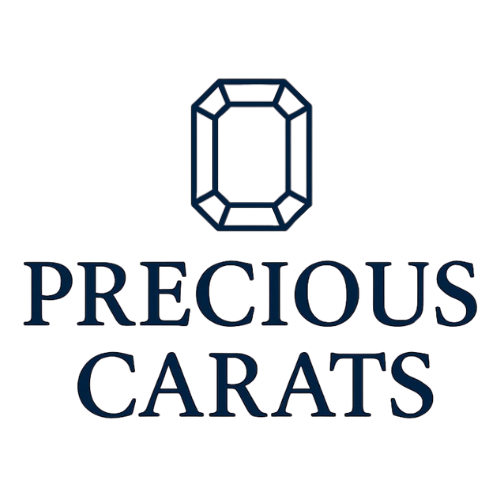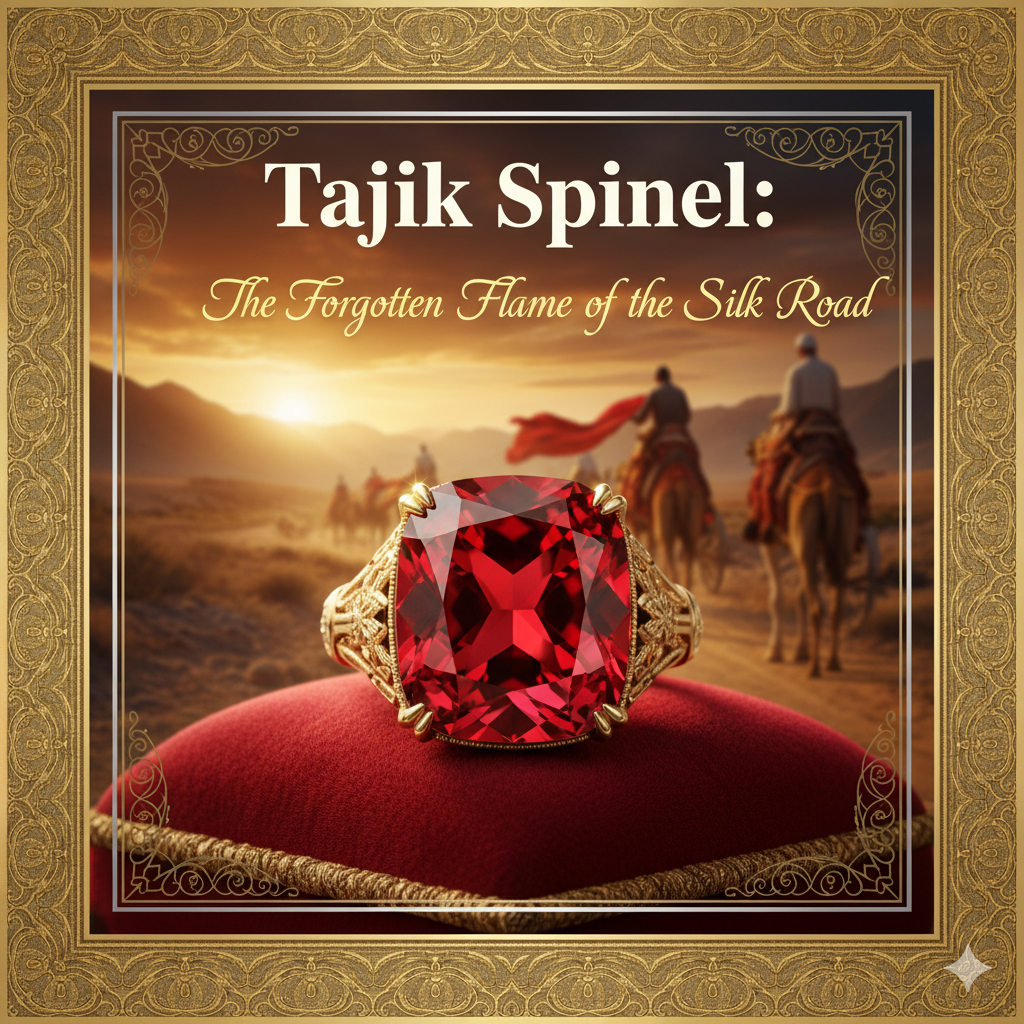Introduction
1. The Mountains of Legend
Far above the valleys of Badakhshan, where Afghanistan meets Tajikistan, lies a ridge that has supplied gemstones to empires for over a thousand years.
This is the Kuh-i-Lal deposit — the ancient mountain that gave the world its earliest “rubies” long before gemology learned to separate truth from illusion.
From this same ridge came the red stones worn by Catherine the Great, Tamerlane, and Shah Jahan — believed to be rubies, but in fact, spinel.
Even the Black Prince’s Ruby in the British Crown — 170 carats of unheated fire — is a spinel born of this same mountain lineage.
Today, we call it Tajik spinel, but its spirit is far older — woven into the Silk Road’s very fabric.
2. The Land of Light and Stone
2.1 Location and Geology
The Kuh-i-Lal deposit lies in the Pamirs of eastern Tajikistan, at an altitude of over 4,000 meters, near the border with Afghanistan.
It belongs to a metamorphic belt of marble and calc-silicate rock formed through high-pressure contact metamorphism.
Here, magnesium-rich limestone, under immense tectonic heat, transformed into marble impregnated with corundum, spinel, and pargasite.
The result: a rare environment where chromium, magnesium, and aluminium met to create the crimson lattice of spinel.
2.2 Geological Characteristics
- Host Rock: Dolomitic marble
- Mineral: Spinel (MgAl₂O₄)
- Formation Type: Metamorphic (contact type)
- Trace Elements: Chromium dominant, moderate iron
- Age: Precambrian crystalline basement (~600 million years)
While Burmese and Tanzanian spinels are youthful (Tertiary age), Tajik spinels are ancient — geological elders of the gem world.
3. The Colour of History
Tajik spinels carry a tone that is unmistakable:
a deep, noble red — not neon, not pink — but a hue that feels like slow fire, burning beneath centuries of dust.
- Hue: Pure red to slightly orangey-red or purplish-red
- Tone: Medium-dark to dark
- Saturation: Strong, never garish
- Clarity: Often high; inclusions fine and soft
- Lustre: Glassy, subdued brilliance with a gentle internal glow
Where Jedi spinel glows in daylight and Mahenge spinel radiates in laughter, Tajik spinel glows in candlelight — the gem of dusk and quiet power.
4. A Thousand Years of Royal Mistakes
For centuries, every great red gem found in Asia was called a ruby.
The word “yakut” in Persian, “manikya” in Sanskrit, and “spinelli” in Latin all pointed to one thing — a stone of blood-red splendour.
It wasn’t until the early 19th century that mineralogists like Hauy and Rome de L’Isle discovered that some of these royal “rubies” were not corundum (Al₂O₃) but spinel (MgAl₂O₄).
The Black Prince’s Ruby and the Timur Ruby (both from Kuh-i-Lal) became the symbols of this correction — reminding gemology that nature loves deception.
Thus, Tajik spinel’s story is not only geological but also philosophical:
It is the stone that taught humanity humility — that even kings can be mistaken by light.
5. Rediscovery in the Modern Era
After decades of silence, Tajik spinel re-entered the gem world in the 1990s, when Soviet and later Tajik geologists reopened old tunnels near Kuh-i-Lal.
New material began appearing in Bangkok, Dubai, and Geneva — deep red stones, untreated, crystalline, and unmistakably regal.
By 2005, gemologists confirmed the geochemical fingerprint of Tajik spinel — higher iron content than Burmese or Tanzanian stones, giving it a deeper, wine-like tone.
But this iron, far from being a flaw, lent it gravitas — the colour of velvet and sovereignty.
6. The Science of Its Glow
| Property | Tajik Spinel |
|---|---|
| Crystal System | Cubic |
| RI (Refractive Index) | 1.718 |
| SG (Specific Gravity) | 3.58 |
| Hardness | 8.0 |
| Dispersion | 0.020 |
| Pleochroism | None |
| Fluorescence | Weak to moderate red (due to higher Fe) |
| Trace Elements | Chromium dominant; moderate Iron |
Because of this balanced iron content, Tajik spinels do not display neon fluorescence like Jedi or Mahenge stones — their beauty is subtler, more classical.
They don’t shout colour; they whisper depth.
7. The Gemmological Signature
Under magnification, Tajik spinels reveal:
- Fine octahedral negative crystals
- Tiny hematite platelets
- Occasional fingerprint inclusions
- No zoning, no silk, no treatment
This cleanliness, combined with its strong colour, makes Tajik spinel a lapidary dream — a gem that polishes like silk and refracts like old wine.
8. The Character of Colour — A Study in Calm
Where Mahenge spinel explodes in pink and Jedi dazzles in flame, Tajik spinel smoulders.
Its tone is mature, like red velvet under soft lamplight — the red of dusk, not dawn.
Collectors describe its colour as:
- “Wine by candlelight”
- “Ruby seen through time”
- “The colour of old royalty”
This distinction makes Tajik spinel perfect for those who prefer sophistication over spectacle.
9. Market Perception and Evolution
Early 2000s: Rediscovery
Tajik spinel quietly entered international auctions, often mistaken again for Burmese origin due to similar depth. Prices were modest, typically $300–800/ct.
2010–2020: Recognition
As Mahenge and Jedi spinels skyrocketed, collectors rediscovered Tajik stones for their rarity, size, and old-world charm. Prices rose to $2,000–6,000/ct for clean, medium-dark stones.
2025: Present Market
Today, top Tajik spinels command:
- $8,000–12,000/ct for 3–5 ct gems
- $15,000–20,000/ct for museum-quality 8–10 ct stones
- Record auction (Christie’s Geneva, 2022): 10.4 ct vivid red Tajik spinel — USD 240,000
10. Comparison with Other Spinel Origins
| Feature | Tajikistan (Kuh-i-Lal) | Myanmar (Jedi) | Tanzania (Mahenge) |
|---|---|---|---|
| Colour Tone | Deep red, wine-like | Bright pink-red | Neon pink |
| Iron Content | Moderate | Very low | Extremely low |
| Fluorescence | Weak | Strong | Strong |
| Transparency | Excellent | High | Very high |
| Emotional Impression | Royal, mature | Spiritual, luminous | Joyful, modern |
| Symbolism | Nobility | Enlightenment | Celebration |
Tajik spinel is not competition to Jedi or Mahenge — it’s complementary.
Where they are youth and light, it is age and memory.
11. The Cultural Aura
Historically, Kuh-i-Lal spinel was so revered that Mughal emperors engraved their names upon it, treating it as a gem of eternal kingship.
Unlike emerald or ruby, it carried no planetary fear — it was considered neutral, auspicious, and steady.
In Persian court poetry, red spinel was called:
“The blood of the earth’s heart, stilled into grace.”
Even today, its glow evokes both restraint and passion — a colour that seems to have learned discipline.
12. Cutting and Aesthetic Philosophy
Lapidaries prefer cushion, oval, or antique step cuts for Tajik spinel, to preserve body tone while releasing controlled brilliance.
Unlike Mahenge stones, which thrive on maximum sparkle, Tajik gems benefit from measured geometry — allowing light to pool rather than scatter.
The best stones feel liquid, not fiery — a mark of confident restraint.
13. Ethical Context and Mining Reality
Mining in Kuh-i-Lal remains small-scale and artisanal.
Production is low — often only a few kilograms of rough each year.
Local cooperatives, supported by Tajik authorities, maintain basic control, though export logistics remain challenging due to geography.
Despite these difficulties, Tajik spinels are considered ethically mined by international standards — no industrial exploitation, no conflict funding, no environmental harm.
14. Collectors and Connoisseurs
Tajik spinels appeal to a quieter breed of collector — those who prefer history over hype.
Its attraction lies not in fluorescence, but in lineage.
Many high-end dealers now classify their red spinel collections into three pillars:
- Jedi Spinel — purity of light
- Mahenge Spinel — purity of joy
- Tajik Spinel — purity of time
Together, they define the full emotional spectrum of red.
15. Auction Presence
- Sotheby’s Geneva, 2018: 15.7 ct Tajik spinel — USD 310,000
- Christie’s Hong Kong, 2020: 9.8 ct vivid red — USD 195,000
- Bonhams London, 2024: 5.2 ct fine Kuh-i-Lal origin — USD 72,000
Each sale reaffirms the gem’s stature as the thinking collector’s red — ancient, natural, and forever untreated.
16. PreciousCarats Reflection — The Flame Remembered
If Jedi spinel is lightning and Mahenge spinel is sunrise, then Tajik spinel is the ember that glows long after the fire has gone.
It carries time within its colour — not youth, not novelty, but endurance.
At PreciousCarats, we revere Tajik spinel as one of the world’s purest manifestations of quiet power —
proof that light doesn’t have to be bright to be eternal.
In the stillness of the Pamirs, the mountain still breathes.
And in every Tajik spinel, that breath becomes light again.

